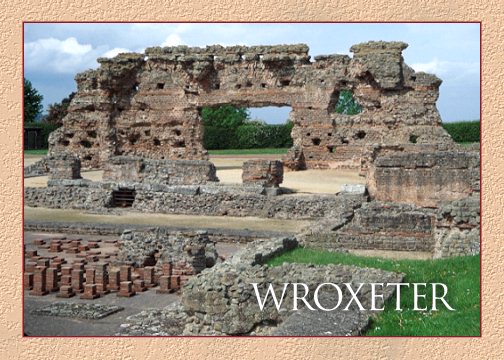
Return to Roman Ruins in Britain

Originally the legionary fortress for Legio XIV and later Legio XX, Wroxeter eventually became the tribal capital (Viroconium Cornoviorum) of the Cornovii and the fourth largest town in Roman Britain. An extensive bath complex is preserved, the palaestra (exercise hall) of which is pictured above.
This section of wall, one of the largest pieces of freestanding masonry left in Roman Britain, served as the entrance to the unheated frigidarium of the baths, from which one progressed to the heated rooms, the tepidarium and hotter caldarium. The tile pillars (pilae), which still can be seen in the foreground, supported the floor, allowing heated air to circulate in a system of hollow spaces (hypocaust) beneath.
In AD 58, a Roman fortress was established at Wroxeter to serve as a base for the conquest of Wales, a campaign interrupted by the Boudican revolt of AD 60/61. Eventually, the garrison was replaced by Legio XX Valeria Victrix, which participated in the final conquest of Wales about AD 74-78 and the later subjugation of northern Britain and lowland Scotland under Agricola. When his governorship ended in AD 86, the legion returned to Wroxeter and then to a new base at Chester (Deva), where it remained for the next 250 years.